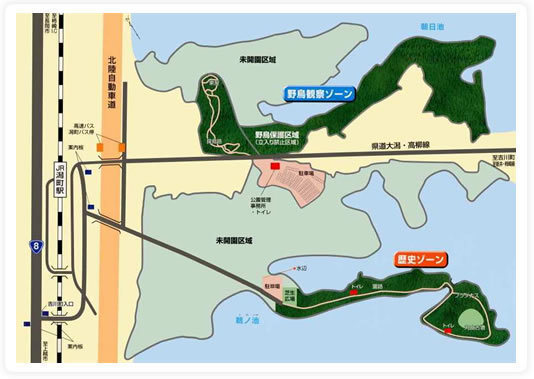- Top
- tourist information
tourist information
Ogata City Tourist Information Map
Tourist information, Prefectural Ogata Mizu and Mori Park
Prefectural Ogata Mizu and Mori Park, Overview
- Prefectural Ogata Mizu and Mori Park are set on the "lagoon" developed in the sand dunes behind the Japan Sea Coast.
Two ponds in the park ... Unoike, Asahi Pond is a pond (lagoon) made by damming a river, a dunes made by the influence of winter's seasonal wind etc.These "lagoons" are recognized as spreading from the ocean through the sand dunes to the paddy field of the back trunk, showed various nature's appearance, and are valuable as a growing place for various animals and plants.Also, "lago" has long been an indispensable existence for people's life.
Prefectural Ogata Mizu and Mori Park are maintained as a place to learn nature while leaving precious nature of "lagoon".It is also being developed as a place to learn the history and culture developed in this "lagoon".
Currently, part of the “History zone” (5.55 ha) and “Wild bird observation zone” (11.2 ha 9.9 ha is the Wild Bird Conservation Area) will be opened, and bird watching, forest bathing and walks will be enjoyed. From now on, we will promote maintenance such as "Nature Observation Park Zone", "Kata-no-Sato Zone", "Holiday Plaza Zone", "Nature Experience School Zone".
There are a lot of zones that are under construction and have not been released yet, but I would like to introduce the "History zone" and "Wild bird observation zone" that are currently open.
When completed, it will be a very large park with a bird observation zone, a History zone, a Kata-no-Sato Zone, a holiday plaza zone, an adventure zone and a nature observation garden zone.
Wild bird observation zone
 Chiba Road uses chip thinning using thinned wood, and you can watch birds without setting footsteps.
Chiba Road uses chip thinning using thinned wood, and you can watch birds without setting footsteps.
Also, there are huts that can take a rest, and how about having a rest while listening to the birds' birds?
You can also watch a forest bath.
History zone
- A History zone also known as "Maruyama Park". In this area, old relics such as stoneware have been found.
At the back of the History zone, there is the Maruyama Tomb, which is said to be the place where the old people's tombs were.
You can also enjoy the change of the four seasons of the Unoike.
 Maruyama Tomb
Maruyama Tomb
It has become a large lawn open space and you can relax and unwind.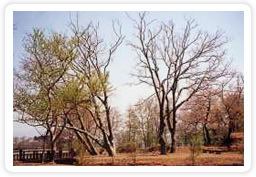 Platanus
Platanus
It is at the entrance of the Maruyama Tomb and it is a very big plain. History zone entrance
History zone entrance
Maruyama Tomb is a picture of a long way from Maruyama Tomb.This road going through the pine grove.A lot of natural plants live around this road.Why do not you observe?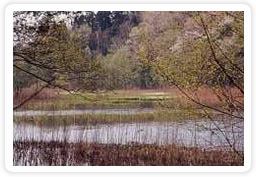 Waterside of the Unoike
Waterside of the Unoike
Aquatic plants produce waterfront.
Natural creatures that can be seen in the park
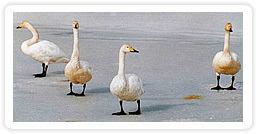 Co swans
Co swans
A lot of nature remains around the ponds in Ogata Ward (such as Unoike), and you can see a lot of natural creatures. Awesome
Awesome
Thirteen thousand birds pass through Hokkaido from the Kamchatka Peninsula, to the Tohoku Region on the Pacific Ocean side, and winter birds come to the south to Shiga prefecture Biwako Lake on the Sea of Japan side.
It is designated as a natural monument of the country.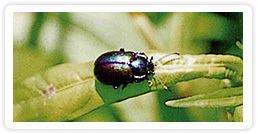 Longhorn beetle
Longhorn beetle
It lives in the environment where wetlands Yoshi and Siroese inhabit.The body length is within 1.2 MM and it is black color, the back is green to shine or red to shine red.
Those on the side of the Sea of Japan have a purple belt.
It is an insect that is designated as an emergency species.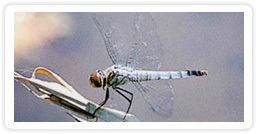 Kofukitombo
Kofukitombo
It is a medium-sized dragonfly that has a slightly thicker, slightly weak feel, mainly inhabiting ponds, swamps, wetlands, paddy fields, etc. where lowland aquatic plants grow.
As it matures it will wipe the white powder on the abdomen, so this name is attached.
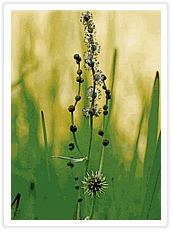 Mikuri
Mikuri
It is designated as an endangered species.In the park, it is distributed in several places of wetlands.
It is a perennial herb that grows in shallow waters such as ponds and swamps that bloom in the early summer and gutters.
Tourist Information Shiosai Yuhi Shiosai Yuhi-no-Mori Park
Ogata Ward Shiosai Yuhi-no-Mori Park
 "Ogata- Shiosai Yuhi-no-Mori Park" has a hiking and jogging course that walks through a pine forest, seaside athletics that allows you to exercise your body, a campsite, and an observatory overlooking the Sea of Japan.
"Ogata- Shiosai Yuhi-no-Mori Park" has a hiking and jogging course that walks through a pine forest, seaside athletics that allows you to exercise your body, a campsite, and an observatory overlooking the Sea of Japan.
The pine grove of Ogata Ward was originally a sand dune zone, and pine trees were grown as a windbreak forest in the past.Even now it is useful as a windbreak forest.
This "Shiosai Yuhi-no-Mori Park" is in the pine forest.
Why do not you extend yourself to Shiosai Yuhi-no-Mori Park.
The president went for a walk to Shiosai Yuhi-no-Mori Park in Ogata Ward.
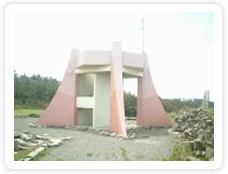 Yuhi no Mori Observatory
Yuhi no Mori Observatory
You can overlook the Sea of Japan and you can look at Sadogashima on sunny days.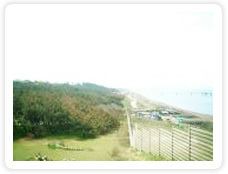 View from the observatory
View from the observatory
"Hamanasu-no-Ike (Pond)" in the Kaihin Koen the number is small in the summer, you can see the fireflies rarely on the beach.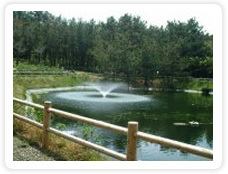 Hamanasu-no-Ike (Pond)
Hamanasu-no-Ike (Pond)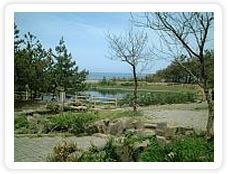 Hamanasu-no-Ike (Pond)
Hamanasu-no-Ike (Pond)
Jogging / hiking course
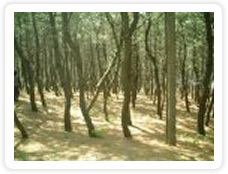 I often see this picture, I think you will see that Matsu-no-Ki stand standing in the same direction.
I often see this picture, I think you will see that Matsu-no-Ki stand standing in the same direction.
This is a Matsu-no-Ki bent by a strong wind blowing from the Sea of Japan.
Looking at the pine in this picture, you can tell at a glance which way the ocean is.
It was a very cool place.The pine grove here is pleasant.
Ogata Seaside Athletic
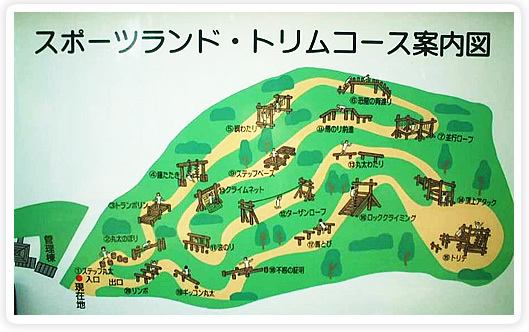 There are a lot of attractions that can be played by moving such bodies in athletics.
There are a lot of attractions that can be played by moving such bodies in athletics.
Please, go and visit.



